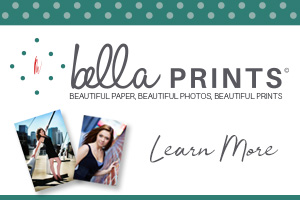Intro by Skip Cohen
There’s so much helpful content in the archives of different websites and blogs. Out for a scroll this week, I stumbled on this one from Robert Nowell. Written in 2014, it’s more relevant than ever!
The pandemic has changed the approach to everything we do, especially in sales for photographers. It’s tough to meet with clients when physical distancing is the new norm. That makes a phone call, video conferencing, email and texting all critical means of “talking” with your target audience.
While this post is a little longer than usual, it’s so valid. Robert’s approach to sales is right on target. Your success has ALWAYS been based on educating your clients, but it’s even more important today. Traffic into your studio or direct-contact meeting with clients is limited, but that doesn’t mean there aren’t opportunities to build your business.
I’m hearing stories from photographers all over the country that business is slowly coming back. You’ve got to use every tool you’ve got to remind your audience the pandemic hasn’t slowed downtime, the kids growing up, or memories that still deserve to be captured.
By Robert Nowell
I’d like to talk specifically more about educating your clients from the first phone call. Many photographers don’t enjoy selling to their clients partly due to the fact that they don’t like being sold to themselves.
As soon as we can identify that what we are really doing is helping clients buy what they already want, the whole process seems different. When we leave sales until the very end, which is usually the proof showing or ordering session, it just makes the process harder for all involved. That’s when people feel pressured when we ask them to make big decisions and give them about an hour to do it.
What if instead, we began the sales process at the beginning, at the first contact. Sales to me always begin with educating the client on the benefits of the product or service.
If someone calls or emails your studio, it means that at some level your marketing has worked. It could be your website or even a referral that incited the prospect to contact you. The referrer or website has given some information to the prospect that was enough reason for them to make an initial inquiry.
We can now begin the sales process by asking leading questions that plant the seeds of helping them visualize their finished photography. This process is done more easily over the phone than through e-mail. I’d recommend using the initial e-mail inquiry to set up a phone meeting to discuss the details.
The first “trial close”
How to test to see if your client is ready to seal the deal.
When conversing via this initial e-mail, the suggestion to the prospect of setting up a phone meeting is the first of many “trial closes” that you will attempt. It will gauge their interest in booking you. If they are seriously interested, they will be more than happy to give their phone number and talk on the phone. If they are not so interested or are “price-shopping”, then they will be less likely to give a phone number and talk on the phone.
Getting the prospect on the phone is also the first opportunity for them to give you a small level of trust. It starts the relationship.
Convert e-mail inquiries into phone calls – it’s the first “trial close” in the relationship.
The purpose of the first contact is not only to answer any questions that they may have but to also introduce questions of our own. We want to get the prospect thinking about options and ideas that they may not have otherwise thought about. It’s also important that we make no assumptions about our clients at this stage. Asking questions is the best way to get a dialog started with that prospect, and it gives us a sense of what the client is looking for from our services.
One simple question
One small question I have used for my portrait business over the years has made a huge difference in my sales averages.
After asking a few questions such as, who will be in the portrait, is this a gift for anyone, would you like an environmental portrait outdoors or an indoor setting, I ask the most important question of all – “have you thought about where you’d like to hang the portrait in your home?”
Notice the bold font on the word hang! Up to this moment, it is likely that no thought at all has gone into where the portraits would be displayed. In fact, many people are preconditioned to think an enlargement is an 8×10 and that’s what you buy from a portrait session. By asking where the portrait would hang, I open the client’s mind to possibilities. The possibility in fact of a finished portrait that is larger than an 8×10. Imagine!
The most important question you can ask will be “have you thought about where you’d like to hang the portrait in your home?”
Introducing the possibilities in advance of the portrait session makes the client a more educated consumer. If we could, after the session has been booked, send along a pdf of options such as Framed Prints, Canvas Gallery wraps or Contemporary Standout portraits we show the client that we can offer a variety of product options suitable for different tastes.
When we talk about facial size in a portrait being important so that the face of our loved ones can be seen clearly from anywhere in the room, the client understands that we want what would look best in their home instead of just selling the biggest and most expensive print possible.
Take cues
Why you must listen to your clients.
How often have you heard a client say, “I wish I could buy them all”? When we take the time to promote our album options, then taking them all seems possible and affordable.
Packaging our products in attractive and simple options will help make purchasing simpler as well. Having too many print package options is confusing, but by having a few tiered options we can help the client decide on the appropriate purchase that is best suited to their needs.
Doing our job in advance of the sales session results in a client that is well informed of the options, prices, and they come into the sales session feeling prepared. Then it’s our job of course to create images that are so beautifully captured that an instant desire to own them is felt on the first view. That is why our work must stand apart from the crowd, it’s why we must push ourselves to find better light, get better poses and expression and coach our subjects on the wardrobe. When all those elements work together, the job of selling becomes easy, dare I say a pleasure for all involved.
A new approach to sales
My new pseudonyms for the word sales are, educate, inform and prepare.
That way my clients don’t feel ambushed when we sit down to look at their proofs and they already have an idea of what they’d like to order and how they will decorate their home with my images before we’ve even seen a photo appear on the large studio monitor. It also reinforces in their mind that I am an expert at what I do beyond when I’m behind the camera.
Action Items
What to do next
Be prepared for your clients. Have a product menu that is easy to understand that shows the options of size, finish and price.
Educate constantly. Show clients samples of portraiture in homes, over mantles, sofas, tables, wall collections, etc. You may trigger an idea for their home.

















